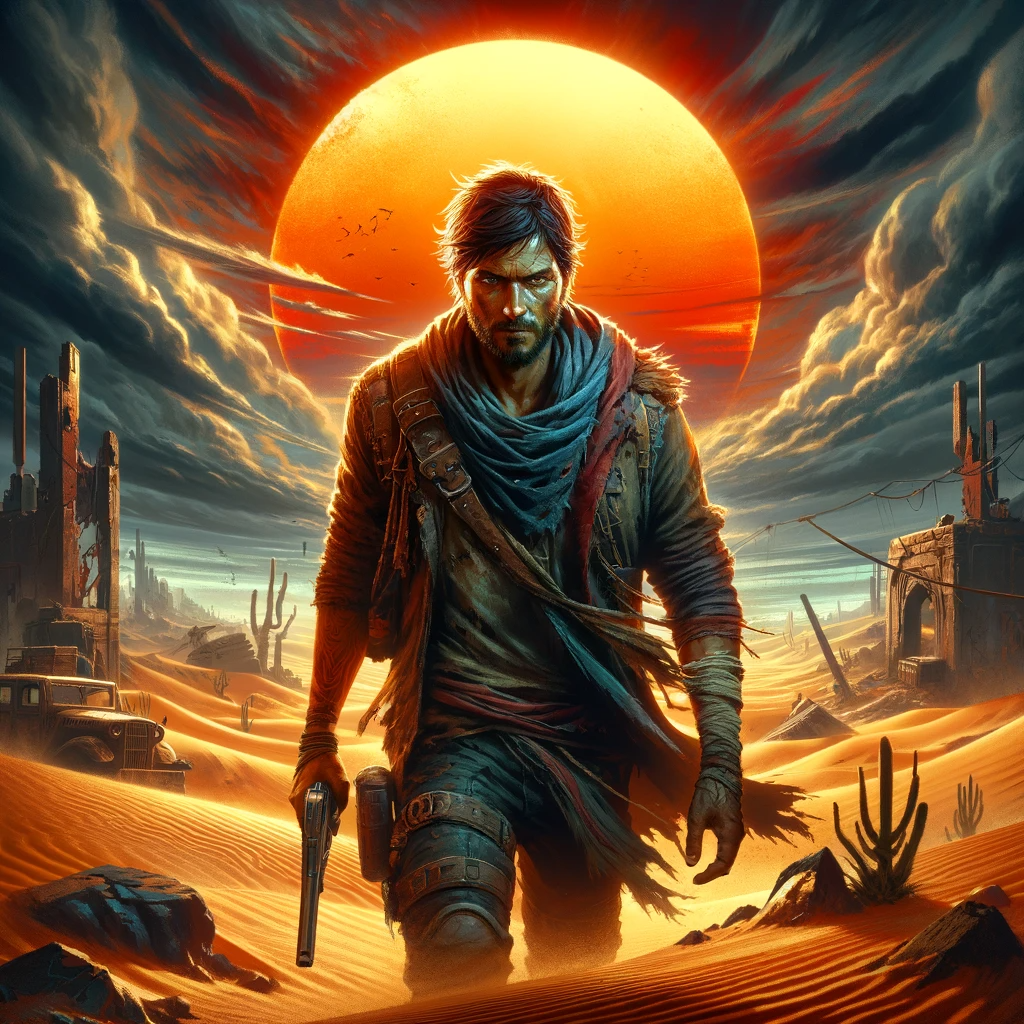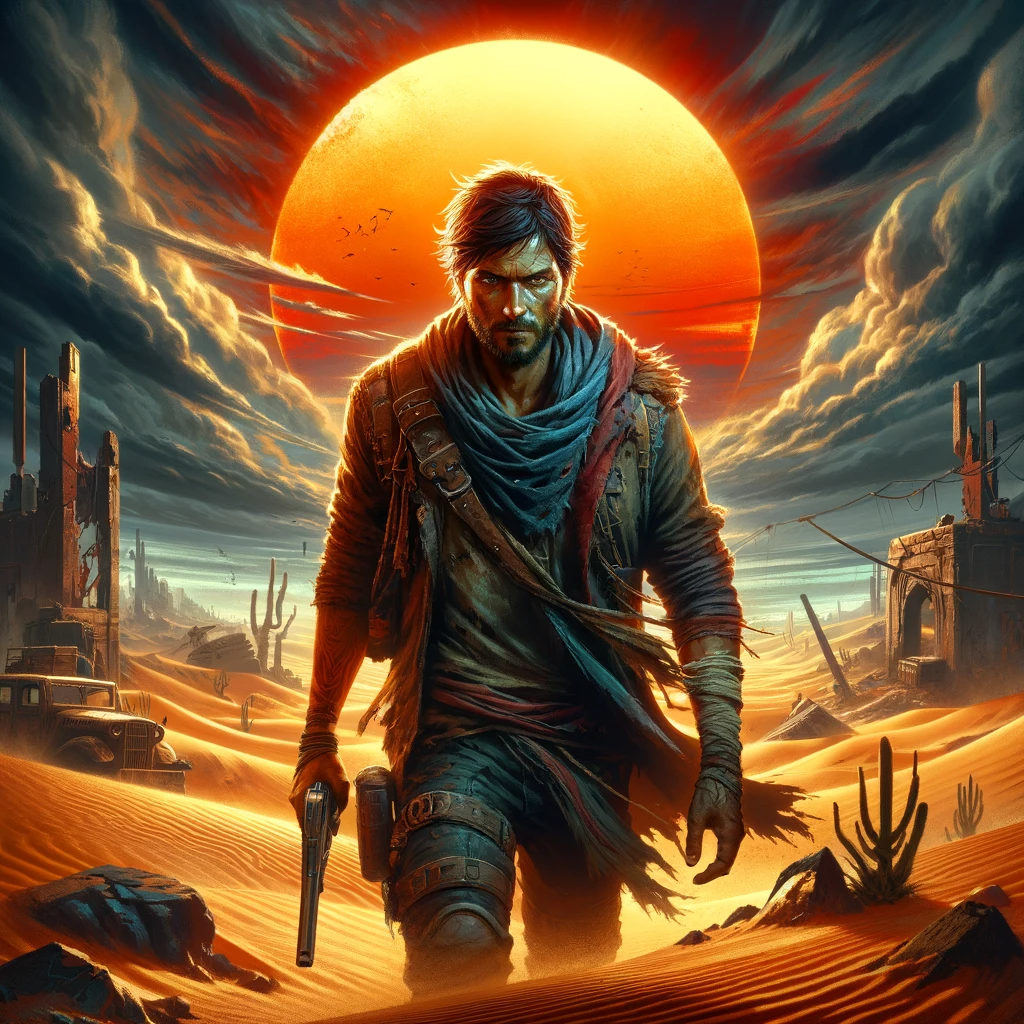Tom’s epic story in the harsh world of Kenshi
In the vast, unforgiving world of “Kenshi,” a game renowned for its open-ended nature and brutal difficulty, Tom embarked on a journey that was both challenging and deeply rewarding. Set in a post-apocalyptic landscape that blended elements of feudal Japan, Western fantasy, and dystopian science fiction, “Kenshi” offered him an experience like no other.
Tom’s adventure began in a small town in the middle of a vast desert, with nothing but a few basic supplies and a world full of possibilities and dangers. The first thing that struck him about “Kenshi” was its sheer scale and the freedom it offered. There were no quests or directions, just a sandbox world where every choice was his to make.
He started as a lone wanderer, scavenging for food and resources. The game’s survival elements were harsh; hunger, injury, and the harsh environment were constant threats. Tom learned quickly that in “Kenshi,” every decision mattered. Choosing to explore a seemingly abandoned building could lead to valuable loot or a deadly ambush.
The game’s combat system was brutal and unforgiving. Tom’s first encounter with a band of roaming bandits was a harsh lesson in this reality. Combat in “Kenshi” was not about flashy moves but strategy, positioning, and knowing when to fight or flee. He learned to train his character in various skills, understanding that growth in “Kenshi” was slow and required patience.
What fascinated Tom the most was the game’s dynamic world. Towns had their economies, factions vied for power, and the world went on with or without his involvement. He witnessed caravans traveling from town to town, patrols clashing with bandits, and the wildlife struggling for survival.
Tom decided to expand his horizons and ventured into the world, where he discovered the diversity of “Kenshi’s” landscapes. From the arid deserts to the fertile riverlands, acid rain-ridden wastes, and mysterious fog islands, each area presented its challenges and stories. The world of “Kenshi” was alive, and its lore was embedded in the ruins, the characters, and the environment.
One of the most striking experiences for Tom was encountering the various factions in “Kenshi.” From the Holy Nation with their religious zealotry to the United Cities with their class-based society and the Shek Kingdom with their warrior culture, each faction had its beliefs and attitudes towards others. Interacting with these factions, Tom had to navigate through complex social dynamics, making allies and enemies based on his actions.
As he progressed, Tom’s ambitions grew. He started recruiting companions, each with their backgrounds and skills. Building a squad brought a new dimension to the game, allowing him to take on tougher challenges and start building a base. Base building in “Kenshi” was an extensive undertaking, requiring resource gathering, planning, and defending against raids.
Tom’s base became his refuge and a symbol of his progress. He set up farming to sustain his squad, built workshops for crafting, and trained his companions in various skills. But with growth came new challenges. His base attracted the attention of local bandits and rival factions, leading to intense sieges that tested his squad’s strength and his strategic planning.
One of Tom’s most memorable adventures was an expedition into the game’s mysterious Ashlands, home to powerful robots and valuable technology. The journey was perilous, filled with environmental hazards and hostile encounters. Reaching the Ashlands and scavenging ancient tech was a testament to his squad’s abilities and his mastery of the game’s mechanics.
Throughout his journey in “Kenshi,” Tom was struck by the game’s complexity and depth. It was a world that did not cater to the player but challenged them at every turn. The freedom to choose his path, build his story, and survive in a harsh world was exhilarating.
Tom’s adventures led him to the farthest corners of the “Kenshi” world, each with its unique biome and challenges. In the swamp lands, he navigated through treacherous terrain, battling blood spiders and dealing with the infamous Swamp Ninjas. Here, he discovered the lucrative but dangerous business of drug trade, which could turn a quick profit but also attract unwanted attention from law enforcement and rival gangs.
The game’s economy system was another aspect that fascinated Tom. Towns and cities had dynamic economies that could be influenced by the player’s actions. Tom engaged in trade, sometimes traveling long distances to sell goods at a higher price. He also experienced the brutal reality of “Kenshi’s” world, where slavery and oppression were rampant. He had the choice to free slaves or, in a darker turn, engage in the slave trade himself, decisions that reflected the moral ambiguity of the game’s universe.

One of the defining moments for Tom was when his base was raided by a major faction, the result of growing tension due to his faction’s increasing influence. The raid was a brutal affair, testing the defenses he had meticulously built and the combat skills of his squad. The aftermath was a stark reminder of the game’s relentless nature, but also of the strength and resilience of his team, which had grown from a ragtag group of survivors into a formidable force.
Tom also delved into the advanced technology that “Kenshi” offered. He sent out exploration teams to find ancient ruins and lost technology, which allowed him to upgrade his equipment and base. This aspect of the game added a sense of wonder and discovery, as each ruin held secrets and history about the world of “Kenshi.”
As his faction’s power and reputation grew, Tom found himself involved in the larger geopolitical landscape of the game. He formed alliances and made enemies, with each decision shaping the future of his faction and the world around him. These interactions often led to large-scale battles, where Tom’s tactical skills were put to the test.
The harshness of the “Kenshi” world was ever-present. Tom’s squad faced starvation, kidnapping, and even permanent injury or death. The game did not hold back in its realism, making each victory and survival all the more rewarding. Tom learned to adapt, to be resilient, and to thrive in adversity.
The beauty of “Kenshi” for Tom lay in its open-ended nature. He could be a trader, a bandit, a warlord, or a simple farmer. The game offered a canvas for him to paint his story, with the brush strokes of his actions leaving a lasting impact on the game’s world.
As Tom’s journey in “Kenshi” continued, he realized that the game was more than a series of challenges to overcome; it was a world to live in, a place where stories unfolded and adventures awaited around every corner. The game was a testament to the power of choice and consequence, a sandbox where imagination and reality converged in a beautifully harsh symphony.
As Tom logged off after each session, the experiences of his journey in “Kenshi” lingered. The game was not just about combat or survival; it was about carving out a place in a world that was indifferent to his existence. It was a tale of growth, struggle, and the pursuit of a vision in a land where every step could lead to fortune or ruin. “Kenshi” was more than a game; it was a canvas for epic stories, forged by the choices and will of the player.



